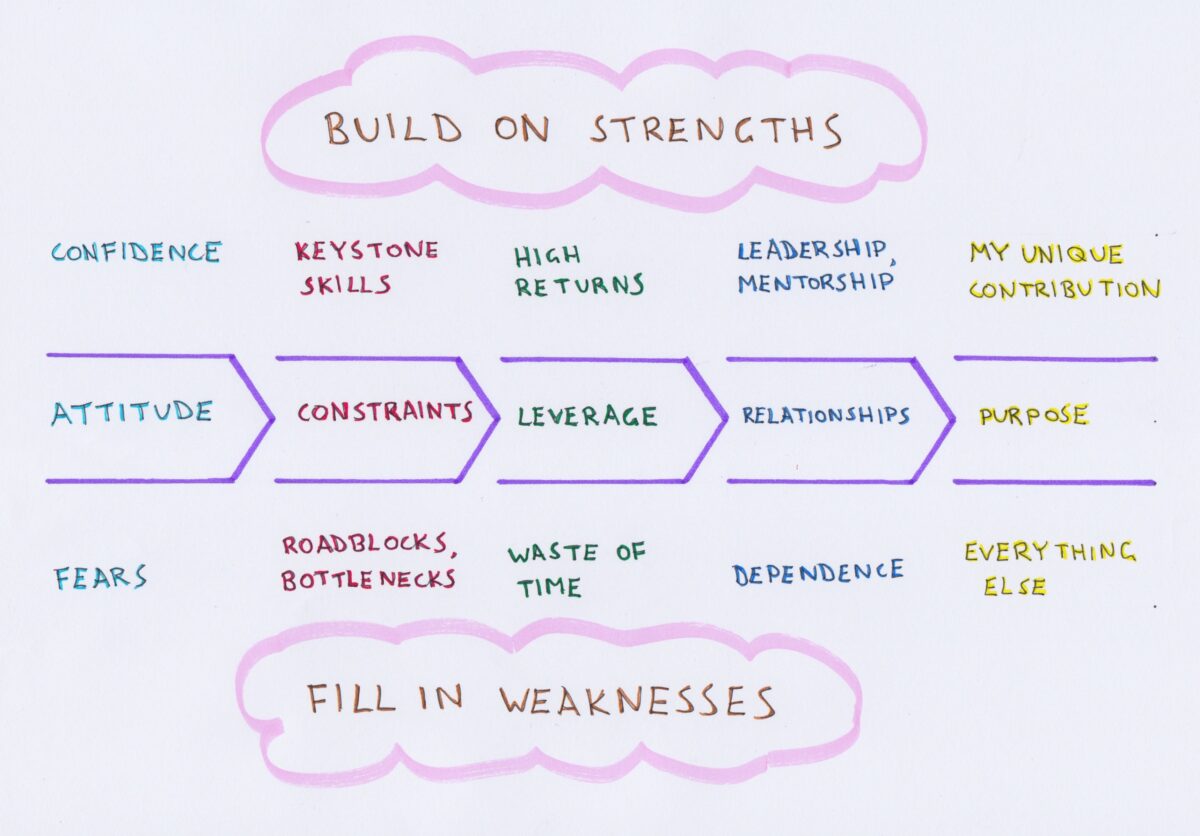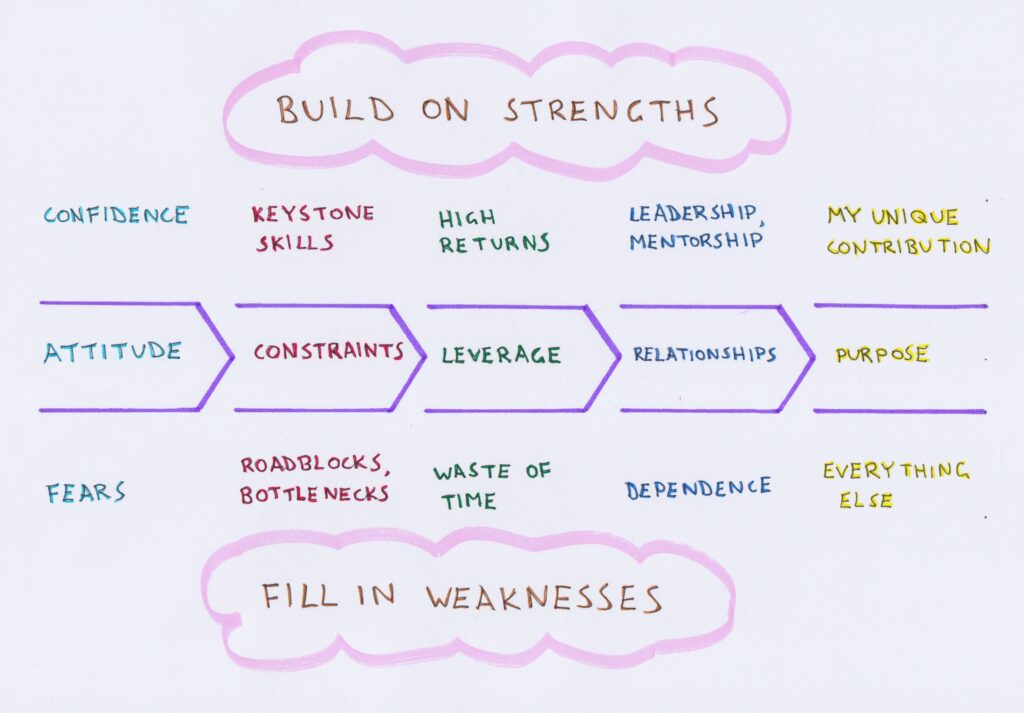A friend of mine—call him Tim—is starting a business and taking steps to generally improve his life. There are any number of things he could do to move forward, but, like all of us, Tim has finite time and energy. Over breakfast last week we were talking about what he should do next. He wanted to start some habits, such as martial arts, that addressed personal weaknesses. I said it might be more efficient to focus on his strengths.
So which should we do—build up areas in which we’re already strong, or fix areas where we know we’re weak?
How do we know, out of all the choices, that we’re not missing something super-important?
And once we pick something, how do we know that it’s the right thing to do?
Principles aren’t sexy
But winning is. And principles help you win. So we hammered out a set of principles that should work for any undertaking. Any area that’s big and complex, where it’s not immediately obvious which course of action will help you most, like:
- Life
- Business
- Trading
Tim used them to figure out whether it was better to start archery or jiu-jitsu. I applied them to my trading and got a number of surprises.
Here they are, with apologies to my Art teacher in secondary school:
Let’s break it down.
There are five categories: Attitude, Constraints, Leverage, Relationships, and Purpose. These certainly aren’t the only possible ways of classifying actions, but they’re sufficiently foundational. If you have some kind of goal in mind, whether a vague one such as becoming happier, a specific one like improving your percentage of winning trades, or a complex one such as launching a successful business, pretty much any task that’s truly useful for getting you there will fit into one or more of these categories.
Each category has two dimensions: positive and negative. I’ve put them in order, because it often makes sense to, for example, build up confidence before tackling roadblocks, but you can use them all at once.
One way to use this is to brainstorm all the things that would build on your strengths and fill in your weaknesses in each category in turn.
Considering all these different angles means you’re less likely to have missed anything important. It also neatly classifies the chaos for you and gives you an overview of where your thinking is clustered, crowded, or lacking.
Let’s take a look at how the categories provoke questions:
- Confidence: What can I do to prove to myself that I’m capable in this area?
- Fear: What do I avoid, put off, or pretend that it doesn’t exist?
- Keystone skills: What skill, quality, or process, if I had it, would make everything else easier?
- Roadblocks: What’s preventing me from moving forward?
- Bottlenecks: What’s slowing me down as I move?
- High returns: What would give outsized returns on my investment of time/energy/money?
- Waste of time: Where am I getting less back than I put in?
- Leadership: What do I need in order to be better able to lead or help others?
- Mentorship: Is there someone who’s achieved what I want from whom I could learn?
- Dependence: Am I unhealthily dependent on someone, or they on me?
- My unique contribution: What am I best at? What do I do better than others?
- Everything else: What good things can I let go of in order to do great things?
Some questions will have a queue of answers ready, and some will need sitting with, or be uncomfortable. That’s how you know it’s useful.
What first?
Once you’ve got a lot of answers, you could try to do one thing from each category in order. Or to work on several tasks in one area until you feel ready to move on. You could prioritise things that hit multiple areas.
But if there were one or two things that excited you as you wrote them down, or that you hesitated to write down because they were scary, you should probably do them first.
And if you still don’t know what’s more important or what to do first, here’s a secret: it doesn’t matter. Anything that answers one of these questions is worth doing. So let’s start!
🌍 Share this:
Want more to read? Here are my latest articles:














